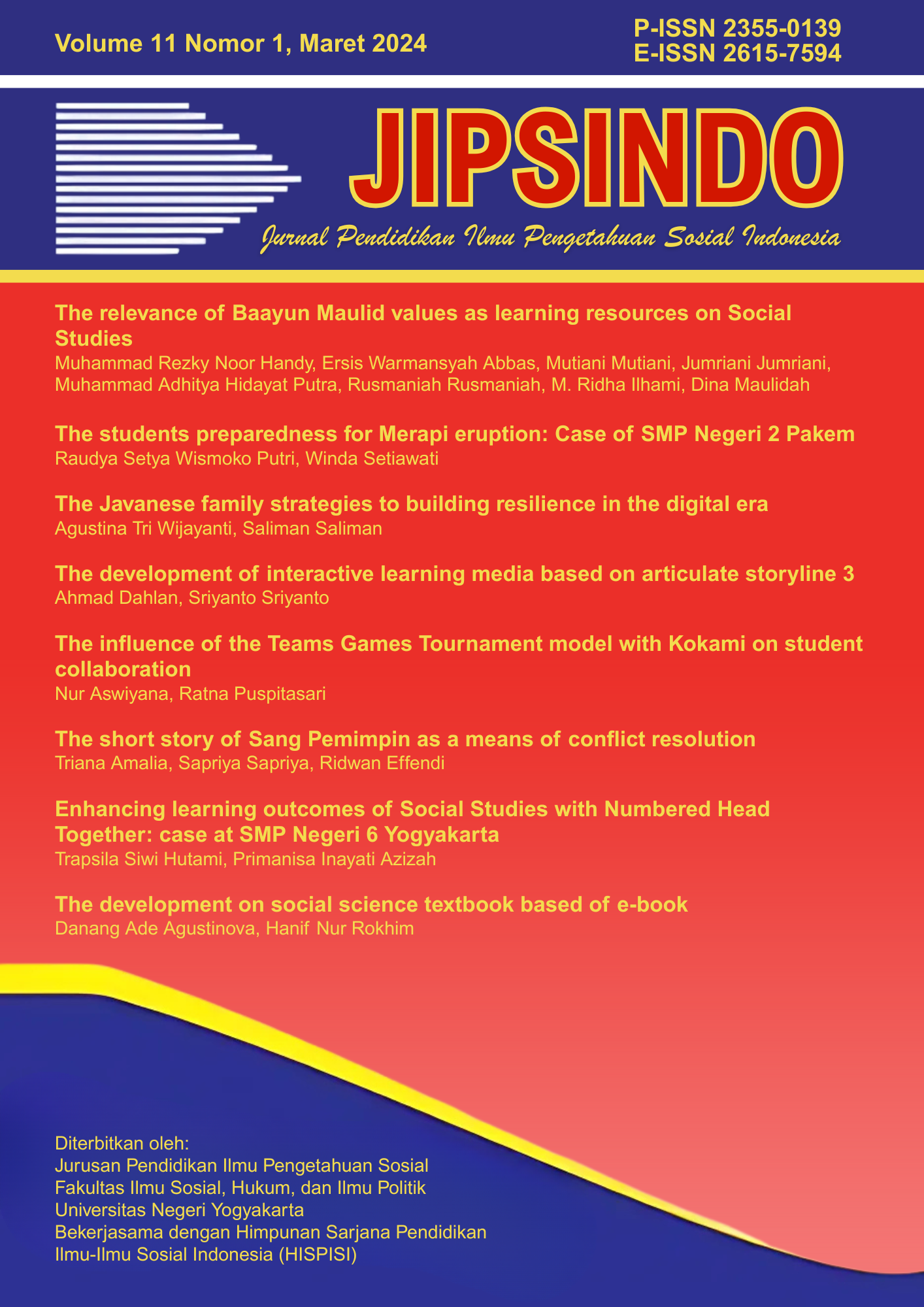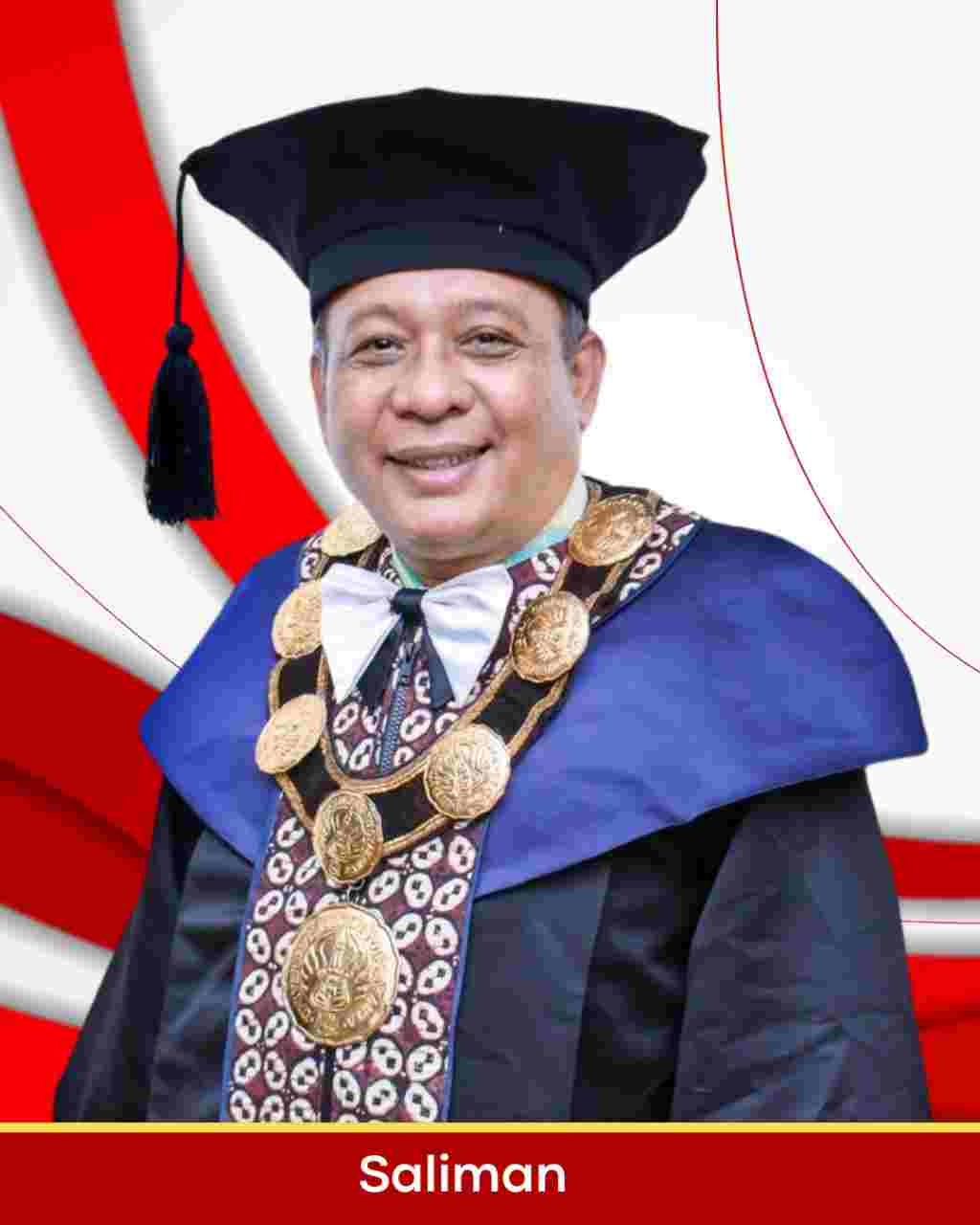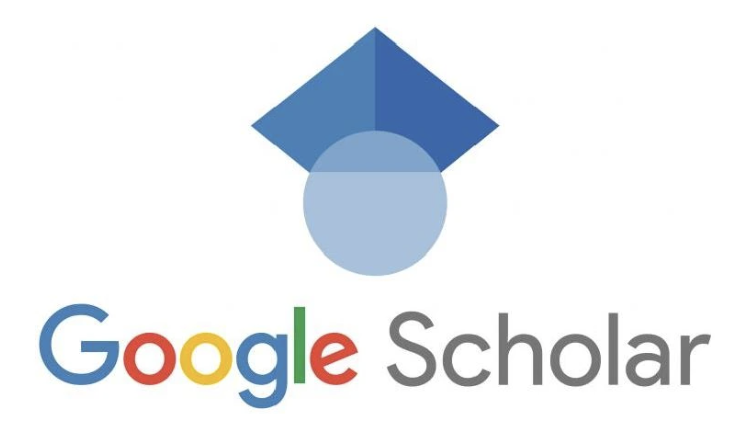The development on social science textbook based of e-book
DOI:
https://doi.org/10.21831/jipsindo.v11i1.69251Keywords:
e-book, Social Sciences, bleanded learningAbstract
The research aims to produce a social studies e-book with a blended learning model< an i=4> for class VIII students by describing (1) the process of developing a social studies e-book, (2) the feasibility of a social studies e-book product, (3) the effectiveness of the e-book Social Sciences. This research uses Research and Development (RnD) research with the steps of developing the ADDIE model. The ADDIE model consists of five steps, namely: (1) analysis (analyzing), (2) design (design), (3) development (development), (4) implementation (implementation), and (5) evaluation (evaluation). Social Studies is considered suitable for the social studies learning trial process. Referring to expert assessments: (a) media expert in the outstanding category, (b) material expert in the outstanding category, (c) teacher response in the outstanding category, (d) response from students in category group small is excellent, (d) the response of students in the large category group is good. (3) The results of the field trial showed that the scores of students who completed the KKM increased, from 17.85% at the pre-test stage and 82.15% at the post-test stage. The results of the hypothesis test also stated that Ho was rejected and Ha was accepted, which means that there is a significant difference in student learning outcomes. So, social studies e-books with a blended learning model are declared effective for use in learning. Collecting social studies e-books includes references, material preparation, video recording, editing and merging, and the completion process.
References
Branch, R. M. (2009). Instructional design: The ADDIE approach. Springer Science &Business Media.
Haleem, A., Javaid, M., Qadri, M. A., & Suman, R. (2022). Understanding the role of digital technologies in education: A review. Sustainable Operations and Computers, 3, 275-285.
Khader, N. S. (2017). The effectiveness of blended learning in improving students' achievement in third-grade science in Bani Kenana. Journal of Education and Practice, 7(35), 109.
Kintu. M. J., Zhu, C., Kagambe. E. (2017). Blended learning effectiveness: the relationship between student characteristics, design features and outcomes. International Journal of Educational Technology in Higher Education, 14(7). https://educationaltechnologyjournal.springeropen.com/articles/10.1186/s41239-017-0043-4
Lee, W. W., Owens, D. L. (2004). Multimedia-based instructional design. Pfeiffer.
Nurgiyanto, B. (2009). Penilaian pengajaran bahasa dan sastra. BPFE
Rachman, A., Sukrawan, Y., & Rohendi, D. (2019). Penerapan model blended learning dalam peningkatan hasil belajar menggambar objek 2 dimensi. Journal of Mechanical Engineering Education, 6(2), 145–152. https://doi.org/10.17509/jmee.v6i2.21784.
Roslina, W., Fahmy, S., Fariha, Z., Haslinda, N., Yacob, A., Sukinah, N., Suhana, N. (2013). The effect of e-book on students learning styles a study in Trengganu Malaysia. Proceedings of the 2013 International Conference on Advance ICT and Education. Https://doi.org./10.2991/icaicte.2013.45.
Rufaidah, L. N. (2020). Learning environment technology-based in improving students' independent learning. Proceedings of 3rd International Conference on Environmental Geography and Geography Education, 747, 1-8.
Sudrajat; Saliman; Supardi. (2023). Sketsa pembelajaran IPS: menuju pembelajaran abad 21. Penerbit Adab
Sugiyono, (2017). Metode penelitian pendidikan (pendekatan kuantitatif kualitatif, dan R & D). Alfabeta.
Kemendikbud. (2013). Salinan Lampiran Pemendikbud RI No. 65 tentang Standar Proses Pendidikan Dasar dan Menengah. Kemendikbud.
Wati, E. R. (2016). Ragam media pembelajaran. Kata Pena.
Zaharah, Z., & Kirilova, G. I. (2020). Impact of Coronavirus outbreak towards teaching and learning activities in Indonesia. SALAM: Jurnal Sosial Dan Budaya Syar-I, 7(3). https://doi.org/10.15408/sjsbs.v7i3.15104.
Downloads
Published
How to Cite
Issue
Section
Citation Check
License
Authors who publish with this journal agree to the following terms:
- Authors retain copyright and grant the journal right of first publication with the work simultaneously licensed under a Creative Commons Attribution License that allows others to share the work with an acknowledgement of the work's authorship and initial publication in this journal.
- Authors are able to enter into separate, additional contractual arrangements for the non-exclusive distribution of the journal's published version of the work (e.g., post it to an institutional repository or publish it in a book), with an acknowledgement of its initial publication in this journal.
- Authors are permitted and encouraged to post their work online (e.g., in institutional repositories or on their website) prior to and during the submission process, as it can lead to productive exchanges, as well as earlier and greater citation of published work (See The Effect of Open Access).

JIPSINDO (Jurnal Pendidikan Ilmu Pengetahuan Sosial Indonesia) is licensed under a Creative Commons Attribution-ShareAlike 4.0 International License.
Based on a work at https://journal.uny.ac.id/index.php/jipsindo.
















